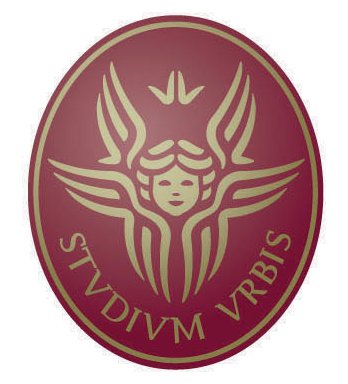Grad student Frank Davenport just completed a month of intensive classes and computer labs at the Spatial Econometrics Advanced Institute in Rome. The SEAI is organized yearly by the Spatial Econometrics Association. It aims at providing a solid background to Master, PhD students, and young researchers interested in the analysis of spatial data, with particular reference to economic applications; only 20-30 students with a strong background in mathematics are admitted each year. Frank gives us a glimpse behind the scenes in the following letter:
As most of you probably don’t know, I’ve been in Rome (the one in Italy) for the past month, dutifully taking notes at the Spatial Econometrics Advanced Institute (SEAI). What is Spatial Econometrics you ask? Contrary to popular opinion, it is not the study of space economics (Do Venutian import tariffs impact real wage rates on Mars?) – No, spatial econometrics is like normal econometrics, but more spatial…
Most of us know what spatial is, so what is econometrics? Econometrics is applying statistics to observational data with an almost maniacal focus on large sample theory. Large sample theory is a set of mathematical tools that helps us answer one convoluted question: If I observe a sample of n observations from a population of N individuals, will the conclusions I draw from the n observations still apply to all N individuals, and what degree of certainty can I have about those conclusions? The ‘spatial’ part is ‘special’ because a lot of the assumptions used in large sample theory, (and, hence, econometrics) don’t always apply to spatial data (i.e., counties, states, pixels, et cetera are not marbles randomly drawn from a bag), so we have to use every letter in the Greek alphabet to figure out how to fix it (to paraphrase Prof. Kyriakidis ‘it’s a smelly pile of spaghetti macaroni’). Most importantly, spatial econometrics uses lots of cool acronyms with extra relevance to anyone with basic knowledge of hip-hop culture (the ‘Wu’ matrix, the ‘SHAC’ estimator, ‘Spatial-J’ tests).
So what about the class? Well it’s 100 hours (70 of lecture, 30 of lab) over a 4-week period. It’s organized by the Spatial Econometrics Association, and held at the City University in Rome (which, with 130,000 students, is the 2nd largest university in the world). The course is intense, (I have not sat this still for that long since high-school), is taught by some of the premiere experts in the field, and focuses on a lot of very recent and exciting developments (Venutian import tariffs do impact Martian wage rates!!). It’s taught by economists for economists. Me and USCB geog alum Kat ‘K-dawg’ Grace, are the only geographers in the group.
As a geographer (which, as you know, is asymptotically superior to all other disciplines) I have an advantage in some areas (I know my way around a shapefile and a W matrix) and a disadvantage in others (a tad rusty on simultaneous equation models). That said, the course is great, and I can safely say, without hyperbole, that, when it is over, I will be the smartest person on the planet.
Okay, enough about spatial econometrics, what about Rome? Well, in the immortal words of the 19th Century British Poet Laureate—Lord Alfred Tennyson—‘It’s like Vegas, but more real’. I couldn’t have said it better myself. Ancient buildings, magnificent fountains, white-Vespas, tight-jeans, Rome’s got it all. There’s even a soccer stadium made of marble (but its’ kind of ruined)!!!
I’ve done the litany of tourist stuff-> Basilicas of St. Peter and Paul, Vatican Museum, Coliseum, Fioro Roman, Trevi-Fountains, Little Caesars, et cetera. It would be a literary injustice to say these places were simply ‘amazing’ or ‘cool’. Suffice it to say that they are really-super-amazingly-cool. But, of all the Roman monuments, museums, bars, and brothels I’ve visited, one in particular stands out as being truly super-amazingly-cool: The Gallery of Maps. Assembled in 1580 by Friar Iganzio Danti, the Gallery is a 120m long corridor featuring 40 wall sized murals, each one a detailed hand illustrated map of various regions of Italy. The corners of the maps feature detailed cross-sections of the various important cities in each of the regions. It’s like the entrance to Geography heaven! (We should get one for the department). To quote Pope Gregory the XIII (who commissioned the work): ‘It makes the Sistine Chapel look like a pile of puke’. That’s all folks. Hope you’re all doing well, see you in July! Ciao.
Links: Spatial Econometrics Advanced Institute: http://www.spatialeconometricsadvancedinstitute.org/admission.html; Spatial Econometrics Association: ; Gallery of Maps:
Editor’s note: Frank added the following addendum: “The course is now over, and Katie (my wife of 3 months) and I are taking our long overdue honeymoon: a 1 month trip through Croatia and Northern Italy.”





